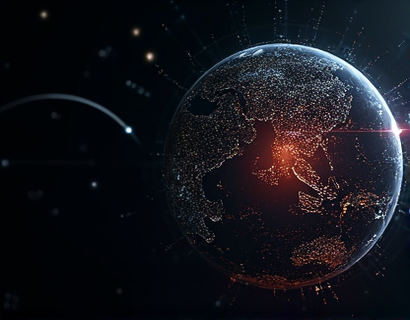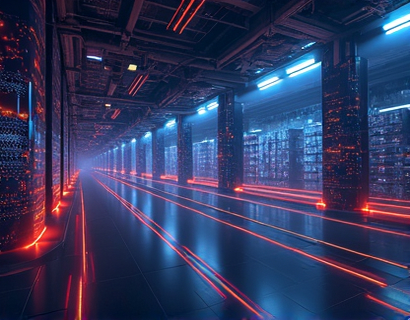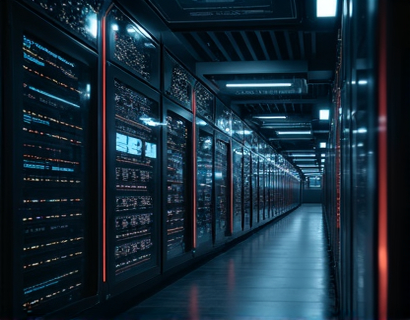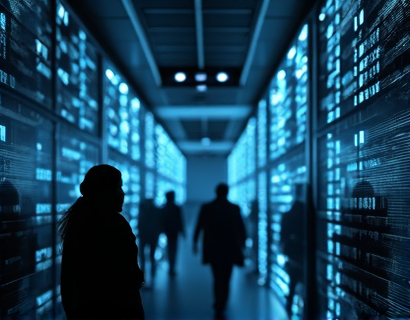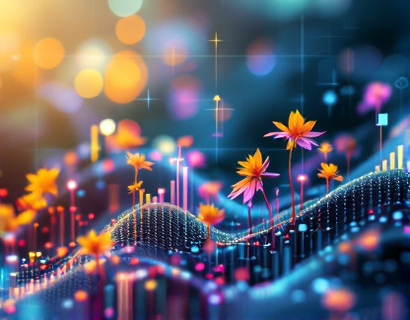Aquaculture Business Optimization: Leveraging Advanced Software for Enhanced Productivity and Resource Management
In the rapidly evolving landscape of aquaculture, business owners and managers face numerous challenges that can impact the success and sustainability of their operations. From managing complex biological systems to optimizing resource use and ensuring compliance with regulatory standards, the demands are multifaceted. Advanced software solutions have emerged as a critical tool for aquaculture businesses seeking to enhance productivity, streamline operations, and manage resources more effectively. This article delves into the transformative impact of leveraging sophisticated software in the aquaculture sector, highlighting how these tools can revolutionize business practices and provide a competitive edge in the market.
Understanding the Role of Software in Aquaculture
The integration of advanced software in aquaculture is not merely an optional enhancement but a necessity for modern business management. These software solutions are designed to address specific pain points in aquaculture operations, such as data management, environmental monitoring, and production optimization. By automating routine tasks and providing real-time insights, software tools enable aquaculture professionals to make informed decisions quickly, leading to improved efficiency and productivity.
One of the primary benefits of adopting advanced software is the ability to centralize and manage vast amounts of data. Aquaculture operations generate a significant volume of data from various sources, including water quality sensors, feeding systems, and growth monitoring devices. Traditional methods of data collection and analysis are time-consuming and prone to errors. Advanced software solutions streamline this process by aggregating data from multiple sources, providing a comprehensive view of the operation, and facilitating data-driven decision-making.
Key Features of Aquaculture Software Solutions
To effectively optimize aquaculture businesses, software solutions must offer a range of features that cater to the unique needs of the industry. Some of the key features include:
- Real-time monitoring and alerts: Continuous monitoring of critical parameters such as water temperature, pH levels, and dissolved oxygen ensures that any deviations from optimal conditions are detected and addressed promptly. Alerts notify staff of potential issues, allowing for immediate action to prevent damage to the stock.
- Automated feeding management: Precise control over feeding schedules and quantities reduces waste and ensures that fish receive the optimal nutrition. This feature not only improves growth rates but also minimizes environmental impact by reducing excess feed that can pollute the water.
- Growth and health tracking: Detailed records of individual or batch growth and health metrics enable precise management of stock. This data can be used to optimize feeding regimes, identify health issues early, and improve overall biosecurity.
- Inventory and supply chain management: Efficient tracking of inputs such as feed, medication, and equipment, along with output like harvested fish, helps in maintaining optimal inventory levels and reducing costs. Supply chain management features ensure that all logistics are coordinated smoothly, from procurement to delivery.
- Reporting and analytics: Comprehensive reporting tools provide insights into various aspects of the operation, from financial performance to environmental impact. Advanced analytics can identify trends, predict future outcomes, and support strategic planning.
Enhancing Productivity Through Automation
Automation is a cornerstone of modern aquaculture software solutions, significantly enhancing productivity across multiple facets of the business. By automating routine tasks, staff can focus on higher-value activities that drive growth and innovation. For instance, automated feeding systems adjust feed delivery based on real-time data, ensuring that fish are fed optimally without human intervention. This not only saves time but also reduces the risk of overfeeding or underfeeding, which can negatively impact fish health and growth.
Another area where automation makes a substantial difference is in environmental control. Advanced software can integrate with sensors and actuators to maintain optimal water conditions automatically. For example, if the dissolved oxygen levels drop below a certain threshold, the system can trigger aeration units to restore levels, preventing stress and potential losses. This level of precision and responsiveness is crucial for maintaining high stock densities and maximizing production.
Optimizing Resource Management
Resource optimization is vital for the sustainability and profitability of aquaculture operations. Advanced software solutions provide powerful tools to manage resources more efficiently, reducing costs and minimizing environmental impact. One of the most significant areas of resource optimization is water management. Aquaculture systems require large volumes of water, and managing this resource effectively is essential.
Software can monitor and control water usage, recycling, and treatment processes, ensuring that water is used efficiently and waste is minimized. For example, recirculating aquaculture systems (RAS) rely on sophisticated software to manage water quality parameters, filter performance, and biofilter operation. By optimizing these processes, RAS can achieve high stock densities while using significantly less water compared to traditional systems.
Energy management is another critical aspect of resource optimization. Advanced software can monitor energy consumption across various systems and provide insights to reduce waste. For instance, by analyzing the energy usage patterns of pumps, aerators, and other equipment, the software can suggest optimal operating times and configurations to minimize energy costs without compromising performance.
Improving Compliance and Sustainability
Compliance with environmental regulations and industry standards is a significant concern for aquaculture businesses. Advanced software solutions help ensure that operations remain compliant by providing tools for monitoring and reporting on key metrics. For example, software can track and record water quality data, waste management practices, and medication usage, generating reports that demonstrate adherence to regulatory requirements.
Sustainability is increasingly becoming a key differentiator in the market. Consumers and stakeholders are demanding more transparent and environmentally friendly practices. Software solutions can support sustainability efforts by providing detailed analytics on resource use, waste generation, and carbon footprint. This data can be used to identify areas for improvement and implement strategies to reduce the environmental impact of the operation. Additionally, sustainability reports generated by the software can be shared with stakeholders to build trust and enhance the brand's reputation.
Case Studies and Real-World Applications
To illustrate the practical benefits of advanced software in aquaculture, consider a few real-world examples. A large-scale salmon farm implemented a comprehensive software solution that integrated water quality monitoring, feeding management, and inventory control. The result was a 15% increase in production efficiency and a 10% reduction in feed costs. The real-time data and automated alerts allowed the farm to respond quickly to any issues, maintaining optimal conditions and preventing losses.
Another example is a shrimp farm that adopted an advanced software system for RAS. The software's water management features enabled the farm to maintain perfect water conditions, leading to a 20% increase in growth rates. The automated feeding system reduced feed waste by 15%, and the inventory management tools optimized the supply chain, reducing costs and improving profitability.
Challenges and Considerations
While the benefits of advanced software in aquaculture are clear, there are several challenges and considerations that businesses should be aware of. One of the primary challenges is the initial investment cost. Implementing a comprehensive software solution can require a significant upfront investment in hardware, software licensing, and training. However, the long-term benefits in terms of increased productivity, cost savings, and improved compliance often justify the initial expense.
Another consideration is the need for technical expertise. Staff must be trained to use the software effectively, and ongoing support may be required to address any issues that arise. Partnering with software providers that offer robust support and training programs can help mitigate this challenge. Additionally, it is essential to choose a solution that is scalable and flexible, capable of adapting to the evolving needs of the business.
Future Trends in Aquaculture Software
The aquaculture software market is rapidly evolving, with new technologies and innovations continually emerging. Some of the future trends to watch include:
- Artificial Intelligence and Machine Learning: AI and ML can enhance predictive analytics, enabling more accurate forecasts and proactive decision-making. For example, AI can analyze historical data to predict disease outbreaks or optimize feeding schedules based on environmental conditions.
- Internet of Things (IoT): The integration of IoT devices will further enhance real-time monitoring and control, allowing for more precise and responsive management of aquaculture systems.
- Blockchain: Blockchain technology can improve traceability and transparency in the supply chain, ensuring that products are sourced sustainably and ethically. This can enhance consumer trust and open up new market opportunities.
- Cloud Computing: Cloud-based solutions offer scalable and cost-effective options for storing and processing large volumes of data, making advanced software more accessible to smaller operations.
These trends indicate a future where aquaculture software will become even more integrated, intelligent, and accessible, further transforming the industry.
Conclusion
In conclusion, leveraging advanced software solutions is no longer an option but a necessity for aquaculture businesses aiming to thrive in a competitive market. These tools offer a range of benefits, from enhancing productivity and optimizing resource management to ensuring compliance and sustainability. By embracing these technologies, aquaculture professionals can gain valuable insights, streamline operations, and make data-driven decisions that drive success. As the industry continues to evolve, staying ahead with the latest software innovations will be crucial for long-term success.










